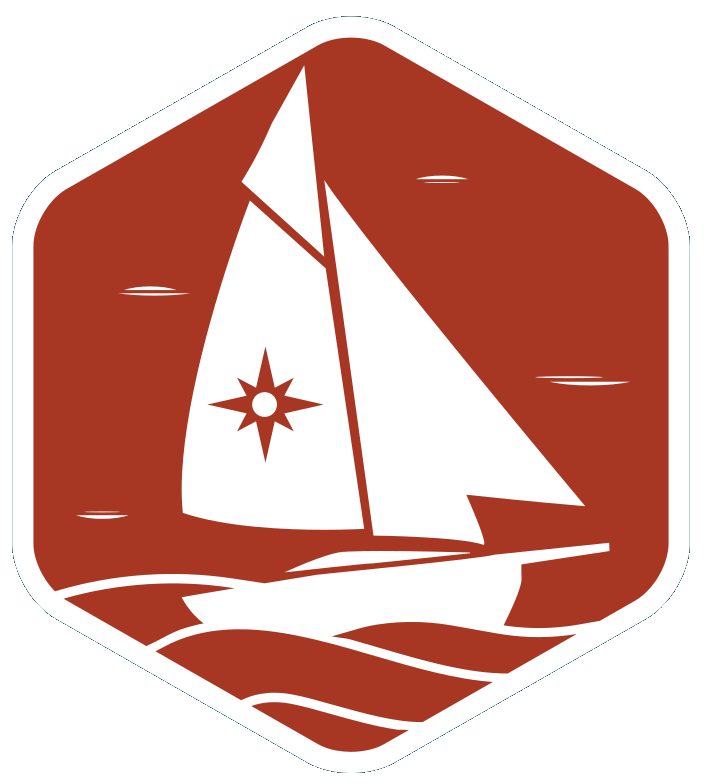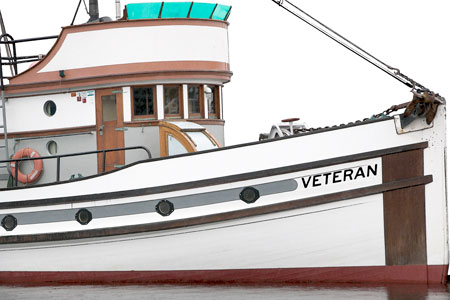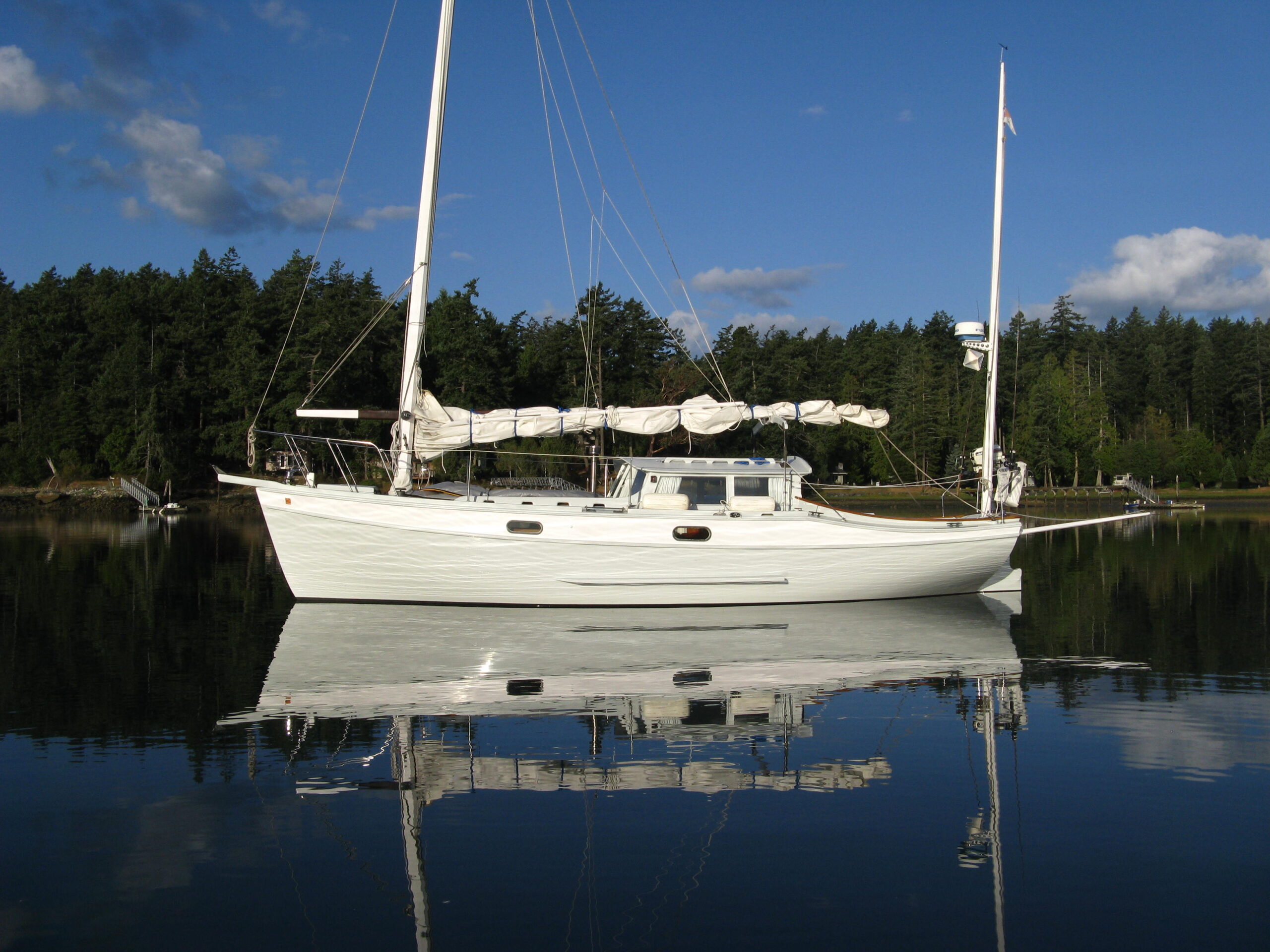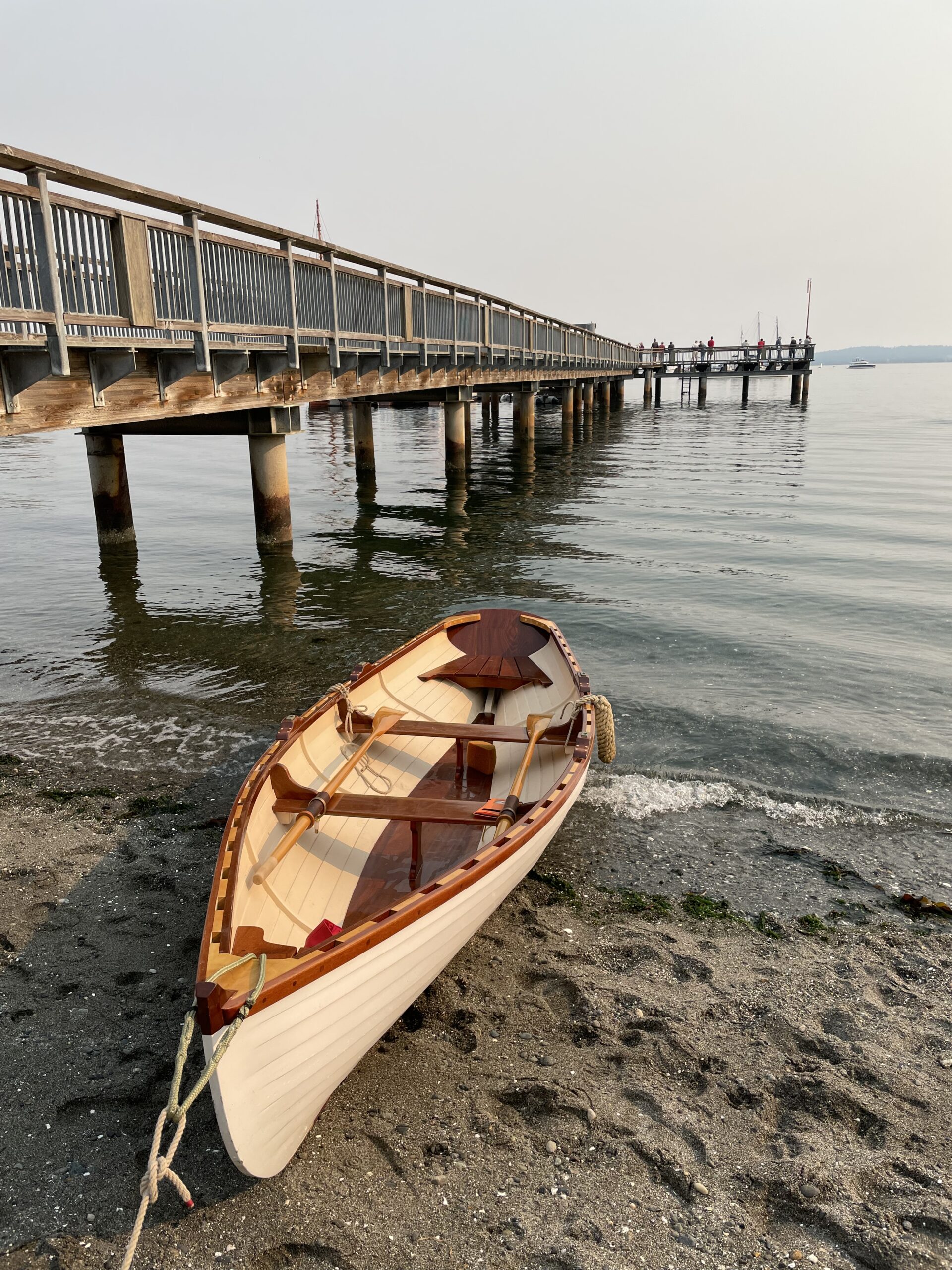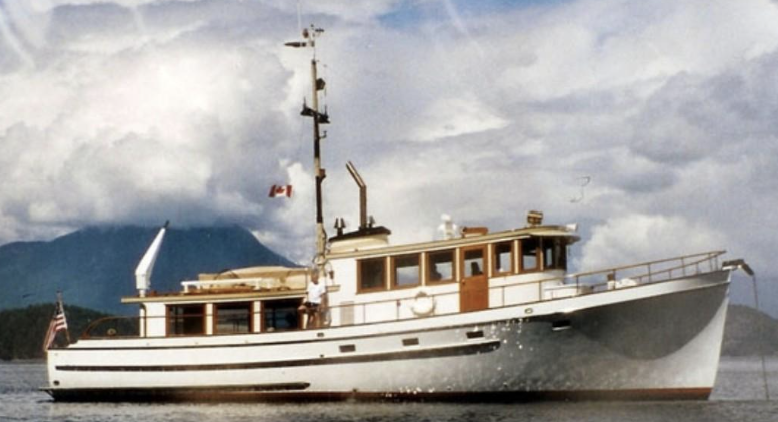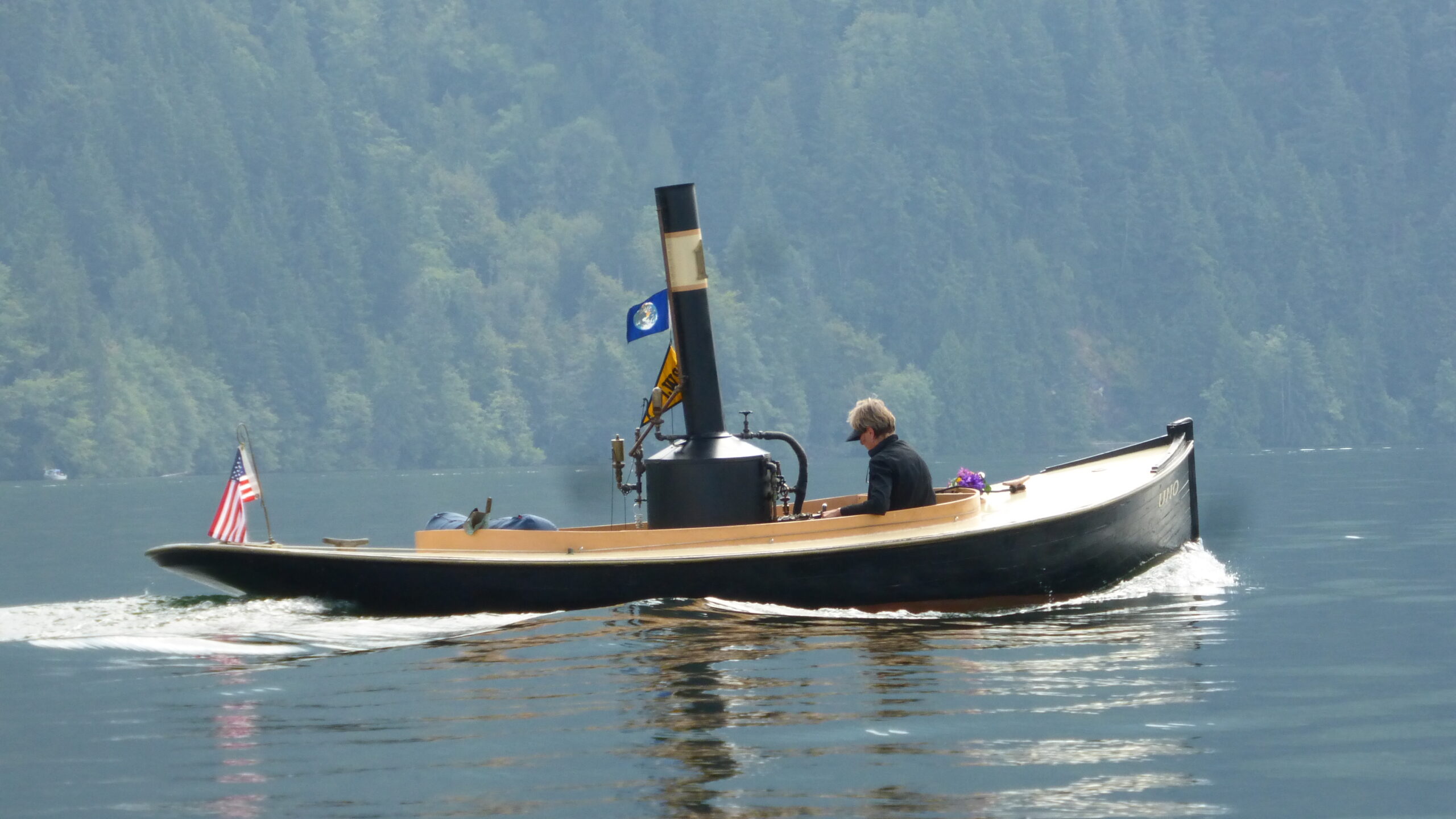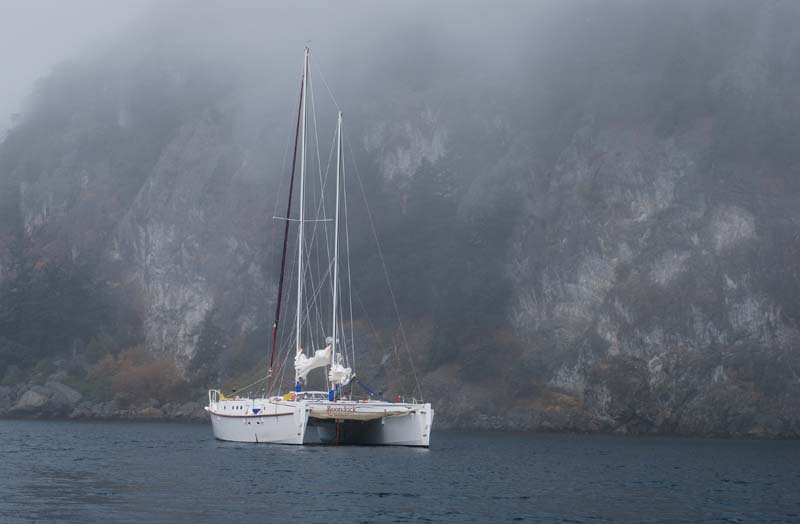
For Sale
She looks a bit like a Wharram. Indeed, the designer of her hulls (a Mr. Beaubien whom I’ve never met) had built a 47′ Wharram in California in the late 1970s and sailed it for 3 years on the Pacific before selling and determining that he could do better. He did better. He designed very elegant chined hulls that greet the water with ironwood shod, curved overhanging bows having tremendous reserve buoyancy. He designed elongated transoms that kiss the water goodbye as the last of the 1/2” thick transom-hung rudder departs. These hulls are 54′ long overall and hew to the wisdom that there is no substitute for waterline at sea. They are chined to yield ample living space below yet sleek, sleek, sleek. So sleek that she is easily driven at 8 knots by her single Isuzu 50 hp diesel. Sleek enough for her to achieves 13 knots under sail with 20 knots on the beam. She barely even leaves a wake. Sleek and incredibly durable. She has 15′ long mini-keels made of sacrificial laminated cedar with an ironwood shoe and massive skegs protecting her rudders. She will easily stand on her keels and skegs and draws only 3.5′. Her hulls have their stringers on end and filleted in place for strength. Stems are nearly 1 foot thick behind their ironwood cladding. Each hull has a large watertight bow compartment followed by amidships accommodations and then another watertight bulkhead with engine room and head trailing – making 6 watertight compartments overall in the hulls. Her hulls are constructed of epoxy saturated marine plywood (from 3?4” to 3/8”) which was then sheathed in fiberglass and West Systems epoxy. Stringers and structural lumber is clear, tight-grained, fir, spruce, and cedar carefully selected from the Olympic forests and supplemented by tropical mahogany, teak, and ironwood.
Mr. Beaubien built himself a set of hulls and his friend Mr. Farnell, a cabinetmaker and very good with wood, built a set of hulls as well. Beaubien launched his hulls in th early 1980’s. He reportedly joined them with 6 crossbeams entrapping a triple-junk rig and headed North. I hear he is somewhere in Northern BC. I’ve never been able to find him to tell him that he designed a damn fine set of hulls. Mr. Farnell completed these hulls soon after and, after consultation with multihull designer John Marples, joined them with 4 massive fiberglass-sheathed epoxy-laminated fir box-beams with 3 1/2” top and bottom faces and 1 1/2” side faces plus internal blocking. Each of the 4 box beams are mechanically fastened to the hulls in 4 places using custom brackets and large bronze threaded rod and bolts. The beams are further buttressed on the topsides by large laminated solid mahogany knees and then glassed to the decks and topped with UHMW running boards to prevent damage from chains, lines, or deck gear on top. Each beam is watertight and adds significantly to reserve buoyancy. Everything is prevented from racking by a series of spruce longerons that run beneath the beams and act as the bridgedeck supports. The longerons carry the bridgedeck more than 3′ off of the water (you can drive the dinghy straight beneath and scrub the entirety of the hulls and running gear). A central steering cockpit with a hard dodger is nested amidships. The cockpit is surrounded by slatted fir removable panels fixed with Amsteel line that make up a strong deck that drains instantly. The Farnell family launched the unrigged vessel in 1990 in Port Angeles, WA after more than 10,000 hours of labor. The Dunning family purchased her in 2005 and then put another 3,000 hours into her completion.
John Marples (now a well respected designer of ply-epoxy cruising and day charter catamarans) designed a rig for her. Even though she is 54′ long, we wanted a rig that could be handled easily and simply by a smaller person than myself so John drew a traditional Marconi Ketch rig. You don’t see many ketch catamarans, but the rig is an excellent choice for an open-bridge-deck cat. You never need to get within 10′ of the water to manage the sails. The mizzen mast is mounted on an aluminum I-beam trestle slung on stainless straps between crossbeams 3 and 4 directly behind the cockpit. The main mast is landed on the 2nd crossbeam ahead of the cockpit. Sails are hoisted from clear decks amidships and all running rigging can be put to the winch either at the mast winches or turned and run to the big Lewmar 65 primary winches in the cockpit. She is very easy to single-hand as all sheets for all 3 sails are right at the helmsman’s fingertips in the cockpit. This rigging wizardry was accomplished by Mr. Brion Toss who installed the new spars and their standing and running rigging in the Summer of 2006. That Winter Carol Hasse built her a fully-battened mainsail with Strongtrack luff and double reef points and refitted a near-new fully-battened mizzen sail from an Aileron 28′ that had only been used for a season’s racing. She also added a 130% furling genoa making for a well balanced sail plan that is a delight to sail. Sea trials were held with Mr. Farnell aboard on the Strait of Juan de Fuca in the Spring of 2007.
Boondock is a big, simple, strong, and easy-to-maintain and repair catamaran in every respect. Aesthetically, she is more like a pair of co-joined Hans Christians than a plastic-fantastic production cat. She has a single direct-drive diesel engine housed in her port hull that drives her 8 knots. Above 2 knots the engine offset is hardly noticeable at the helm. For marina handling there is a counter-poised Nissan 25 hp outboard mounted on her aft tramp. Did I say Aft Tramp? She has both forward and aft trampolines. The forward tramp is a traditional fixed trampoline made of Sailrite’s big boat trampoline material with reinforcing webbing and lashed in place with Amsteel. The aft tramp is Net Systems’ 3/4” knotless Dyneema netting strung on an aluminum frame that lowers using the two cockpit primaries and 1/2” Dyneema lines. This makes it very easy to deploy, retrieve, and carry all sorts of water toys, dinghies, and divers. The aft tramp is also a perfect beach for the family and pets when deployed on the hook. The hulls have huge dry bow lockers forward followed by watertight bulkheads. The central cockpit helm is one of my favorite places. Helming this catamaran feels like you are wearing an enormous pair of water skis because you are standing right in the middle where there is least motion but the best visibility and sensation. Everything is right at hand and you can really feel all of the intricacies of wind and water without an intervening salon. The hard dodger provides good protection to the helmsman and the cockpit could easily be enclosed and heated if desired.
